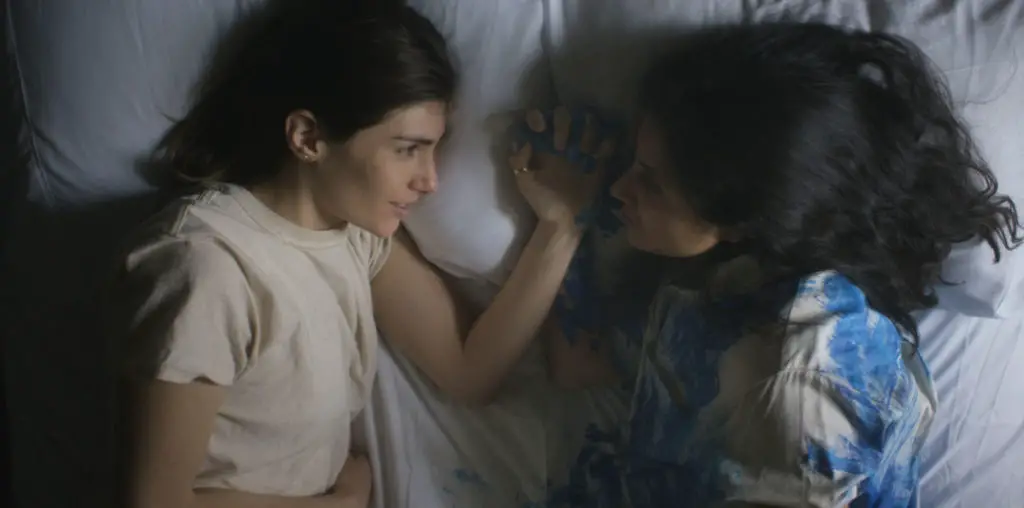
This review was originally published on June 7, 2013…
On December 31, 2009, snowboarder Kevin Pearce resembled a whooshing, flying, diving superhero while training for the Olympics in Park City, Utah. The fearless blonde 22-year-old, whose scruffy hair and devil-may-care grin epitomized “ski bum,” was attempting an insanely difficult airborne jump called a “cab double cork.” But this time, something went horribly wrong. Pearce’s face slammed into the ramp during his descent, the boarder’s body thudding limply onto the icy ground. For the next 26 days, Pearce was confined to an intensive care unit, his ski helmet replaced by a neck brace and tubes. An Olympic hopeful, the brilliantly acrobatic athlete had sustained a career-ending brain injury that would forever alter his life.
“The Crash Reel,” Lucy Walker’s superb documentary, will initially break your heart. But yes, it’s also uplifting, life affirming, and inspiring, three words that often seem sappy and clichéd. This time, they’re entirely appropriate. But “The Crash Reel” really isn’t about miraculous recoveries and snowboarding stunts. It’s about balancing on a tightrope between remaining true to one’s passion, and honoring the love of family.
I’m not a sports fan, and I’ve seen dozens of movies related to personal recovery from traumas both physical and psychological. But films like “The Crash Reel,” “Higher Ground,” and “Murderball,” have shaken me like few films do. Why? Because not only do these movies offer inherently interesting “comeback” stories: they also escape the mold, becoming organic animals set free to hunt far beyond the conventional trappings of most sport documentaries.
“The Crash Reel” guides us through Pearce’s youth (as a restless toddler, he was already jumping off household furniture), his competitive nature (including a fierce rivalry with fellow snowboard superstar Shaun White), and his radical life changes following the accident. When Pearce awakens from his coma, mouthing the lyrics to Neil Young’s “The Believer,” his eyes stare dazedly ahead, locked into the thousand yard stare of a shell-shocked soldier. Visual deficits, seizures, and memory issues become formidable hurdles. His recovery is further hampered by a complicated off-screen eye surgery (during a post-screening Q & A at SIFF, Pearce reported that the footage was so gory, none was used in the film).
Eventually, Pearce recovers much of his physical ability. But it’s clear that something’s still amiss. MRI scans detect scars on his brain. Doctors insist that the damage will impair his memory and cognition for years, and that Pearce’s vows to climb back on his board are ill-conceived. He’s told that a second brain injury will further ravage his mind and body. Despite this, Pearce defiantly insists that he will return to the slopes and train for Olympic competition.
At this point, “The Crash Reel” morphs into a meditation on the strength it takes to push ego aside, and empathize with those who have been along for the grueling ride. Pearce’s parents, brothers, and friends have weathered hell alongside of him, and don’t want to do it again. During a family intervention, Pearce is confronted by younger brother Dave, a sibling managing Down’s syndrome and saddled with his own set of challenges. Breaking down at the Pearce dinner table, Dave pleads, “I don’t want you to die.”
Soon afterwards, Pearce meets another pro-snowboarder whose judgment, following multiple brain traumas, appears to have been completely scrubbed from his cortex. Pierce shows visible disbelief at the magnitude of these effects (including reported episodes of verbal and physical aggression) on his peer, finally waking up to the consequences of resuming his boarding career. In the process, he forges a stronger connection with loved ones. Father and son discuss the dyslexia that runs in the family, and the academic hurdles it posed for both of them. Pearce explains that snowboarding was his way of escaping the frustrating grip of these learning disorders.
“The Crash Reel” also touches on the ethics of snowboarding’s ongoing push to please spectators by increasing the height, speed and general difficulty of the sport. We’re told that half-tubes, the concave, artificial runs used by snowboarders during competition, were once six feet tall. Today, they tower over twenty feet high. Pearce’s father reminds us that race-car competitions achieved such extreme levels of danger, limits on engine size were eventually enforced. Of society’s perception and treatment of snowboarders as super-human gladiators, and how that perception might have attributed to his son’s accident, he admits, “I felt that somehow, we were all to blame.”
Will Pearce return to snowboarding? I won’t spoil the finale. Suffice to say that before “The Crash Reel” completes its course, the questions hardly matters. It’s one of those rare “sports recovery” films that, like the amazing athletes it studies, leap to an entirely new level. And one thing’s for sure. After screening “The Crash Reel,” you will never, ever again delight in televised images of skiers and snowboarders wiping out on the slopes. Guaranteed.
